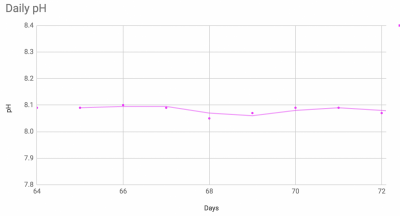- Joined
- May 22, 2016
- Messages
- 6,542
- Reaction score
- 10,099
Any updates on this? I was just looking through this thread and found the whole discussion about trace elements interesting.... debating trying to supplement them in my tank
Still playing with it. On my personal tank, between vacation travel and an A/C disruption where tank got hot, I'm just now getting it back stable. I'll then test the Iron supplement part of Red Sea Trace Colors. I'll be looking at different things than he did, but check @Brew12's documentation in post #134 on Fe supplementation increasing Algae fuge performance as indicated by 24-hr pH monitoring.
I'll try to post details later, but the levels of Iron that occur in NSW are below what ICP can detect, and the levels we can test with hobby kits, and therefore the levels that Red Sea recommend are several orders of magnitude larger than natural. All that said, if a tank has N & P provided consistently replete, then I'd bet that Fe is most likely a limiting nutrient to the growth of something.
What's limited? Algae - almost certainly. Corals - maybe
Is this limitation met by enriched fish foods, or premium 2-part/3part, or other additives? I suspect that varies considerably from tank to tank.



















